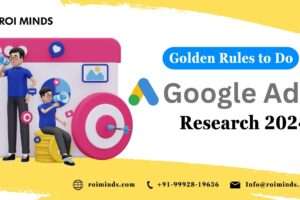Introduction
“Google Ads” is considered as one of the major marketing channels especially in eCommerce businesses. If you’re looking for the best option to boost and get more traffic on your landing pages, than Google Ads for eCommerce is the best option. Generating leads and more sales is done with utmost efficiency through Google Ads. As per the statistics based on research done, Google Ads convert 50% better than organic traffic (in terms of paid ads).
Top 5 Google Ads Strategies to Get 10x ROI for an Online Ecommerce Store
Google ads is a solid platform that allows you to advertise in different places, using different campaign types and different ad formats. It is suggested to run these different campaigns step by step in Google Ads for eCommerce:
- Shopping Ads
- Remarketing Ads
- Search Ads
- Youtube Ads
- Display Ads
1. Google Shopping Ads
These are the product-based ads that show up for product searches across Google and Google shopping. It is a powerful and influencing method to get your products in front of prospective buyers. Let’s understand this in detail:

Product Feed :
Putting into simple words, a big spreadsheet with all your product information mentioned in it is known as a product feed. It is one of the most essential factors to run shopping Ads. The only problem here is that you need to have all the various attributes and provide it exactly in the format as demanded by Google. Also, if you are on one of the big eCommerce platforms for sure there will be an app or plugin to take care of this.
Google Merchant Center Setup:
This is one of the most important tools of all. In Google Merchant Center you connect your product feed to Google’s system. Here is a twist, some platforms like Shopify, and Magento will connect straight through the API whereas, on others, the work is on you, you have to add the feed manually. After this step, you’ll be able to get the quality information you’ve provided. If there are some errors after mending them you’ll be ready to move to Google Ads for eCommerce.
Smart Shopping Vs Standard Shopping Campaigns:
While you’re setting up a new Google shopping campaign one of the initial things you’ll be required to do is to decide to go for a Smart Shopping Campaign or a standard one.
Smart Shopping is not something that existed since the beginning, launched a short while ago, one of the biggest differences between the two is that in the case of Smart Shopping, Google will automate many things which you tend to do manually with Standard Shopping Ads.
Nevertheless, bidding, where your ads show up, and which search queries you’re showing up for are some of the things you can’t control with smart shopping.
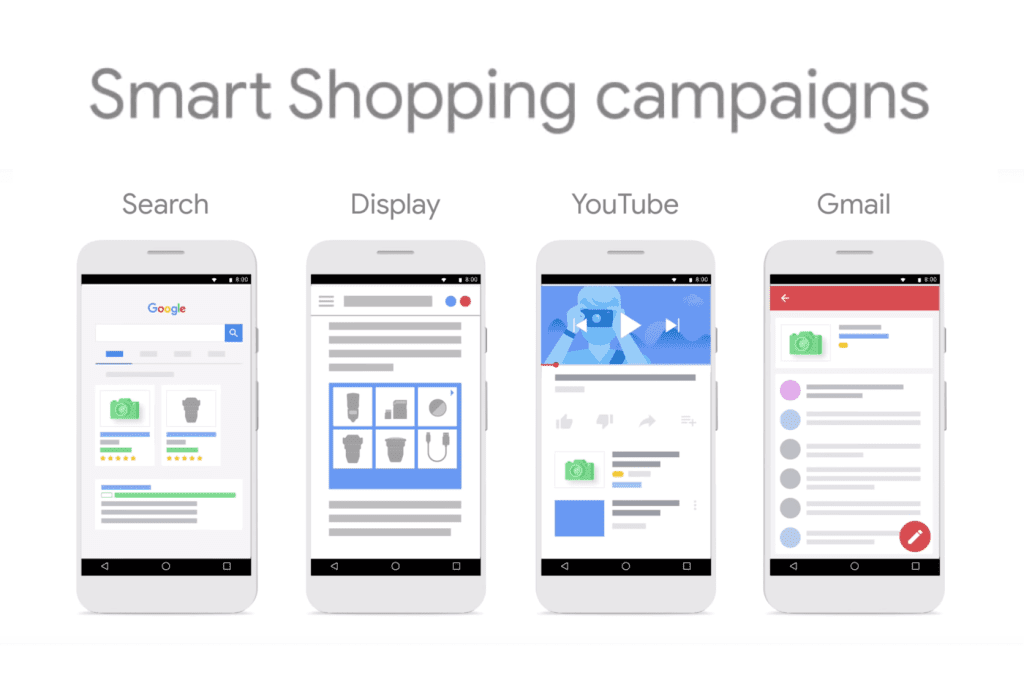
Advance negative keywords:
In this scenario you don’t get to pick the keywords you want your shopping ads to appear for however, you can add the ones where you want to prevent your ads from showing up. If you’re looking to find them, it is quite accessible to find them through keyword research or from previous campaigns.
Selecting the Bidding Strategy:
It’s better to have a reality check before diving into something. It is quite important to have the right bidding strategy but when starting out you won’t get any benefits from one or the other. Maximizing clicks can get things messed up therefore, in the beginning, it is suggested to go for manual CPC and proceed further.
Shopping Campaign Structure Planning:
Shopping campaigns have a very simple structure, a single campaign with a single ad group and a single product group. Some advertisers tend to divide product groups in order to bid differently. At this point, advertisers find it quite hard to figure out. Here’s a thing that seems to be unfair, which is that you’re paying the same amount for all queries that Google decides to match with your product.
Custom labels as per shopping campaign Structure Planning
Another way to conduct more effective campaigns is to distribute your budget to high-selling goods with a decent margin or a high net income. That concept is not available in Google Ads, but you could still add it to your product feed by using custom labels.
Showcase Shopping Ads:
Showcase Shopping Ads stand out in their own way from Smart and Standard Shopping Campaigns which produce the same ads format. Rather than displaying a single product, a Showcase Shopping Ad displays the retailer’s range of items.
In a scenario in which someone clicks on the initial card, the actual items that fit the search query can be seen. It is quite common for most of the ads to appear on mobile for very generic category searches like “Cookware” and “Mattress”.
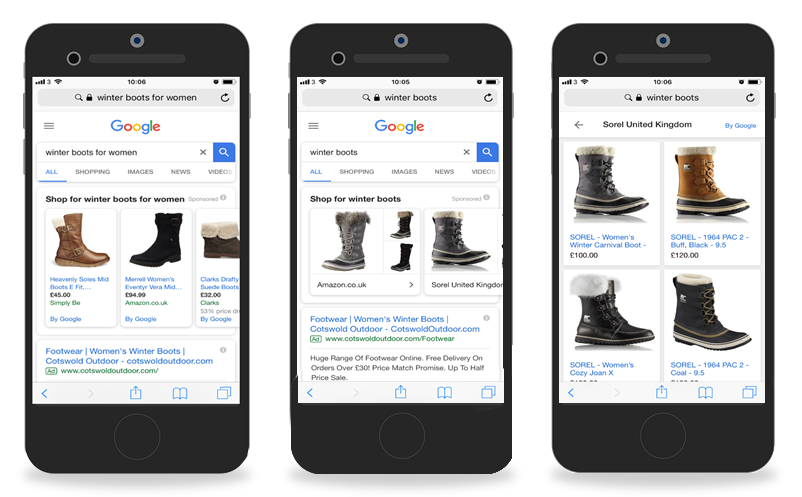
In addition to the information mentioned above when these are displayed, the normal shopping Ads won’t show. Therefore, there is no internal competition.
Bid adjustments:
In simple words, Bid adjustments are a type of adjustments that you can make to increase or decrease the CPCs depending on the user’s characteristics.
These extend from -100% to an infinite increase. For instance, you could decrease your max CPC by 45% for mobile devices. You’ll do this when you know clicks coming from mobile devices are 45% less valuable to you. Some of the possible bid adjustments are Devices, ad schedule, location, and audiences.
Audiences Selections:
As audiences are considered a special type of bid adjustment, in this scenario you’ll be able to adjust your bids based on visitors that are part of different audiences. For example for a visitor who had started checkout but did; finish in case, you could increase your CPC by 70%.
Moreover, it is important to add your audiences to your campaigns as observation, not targeting.
Product Feed Optimization:
Google Shopping operates on the information that you provide in your feed for your product. For betterment, optimizing the information in the feed that you provide will help you to achieve better results. Below mentioned are the major ways to achieve them:

- Product Titles:
Right keywords in the title have a lot to do with Google searches. It is important to remember that a big part of search query matching happens with the title. Having the wrong keywords in the title will be an obstruction in matching the queries. It is recommended to do keyword research. Keep the most important keywords at the start of your title.
- Product identifiers:
Product identifiers are the brand, GTIN, and MPN numbers, they are the cause of many headaches when setting up your feed. It is important because it helps to attain product visibility. In a case in which you are using the same GTIN number as another seller, Google has little more information about which search queries to show your products for.
- Product Images:
To stand out, you bring change in your selling, if there are other sellers doing the same too. Here, taking pictures of your own items can be a game changer. This is highly profitable for dropshipping stores.
Google Remarketing Ads
These are very special kinds of display ads that appear on other sites to people who have visited your website. It is important to see if remarketing ads work for your business. Because for some it works like magic and for some, it even gets hard to generate enough return from them.
There are two groups of remarketing namely, Static marketing and Dynamic remarketing:
Static Remarketing Ads:
In this scenario, you tend to show the same ad to every visitor. Also, you can make separate ads for visitors to specific pages on your site, but all those visitors will see the same ad.
Dynamic remarketing campaign:
This type is quite different from the one mentioned above, rather than having the same ads, the ads feature products a visitor was looking at. Wondering how Google knows it? Simple, by the tracking code you’ve placed on your website.
The campaign is linked to your feed allowing Google to pull together an ad “custom” for that visitor. There is a reason why this type of remarketing is considered to be “intermediate” because the tracking code can be quite tricky to get right.
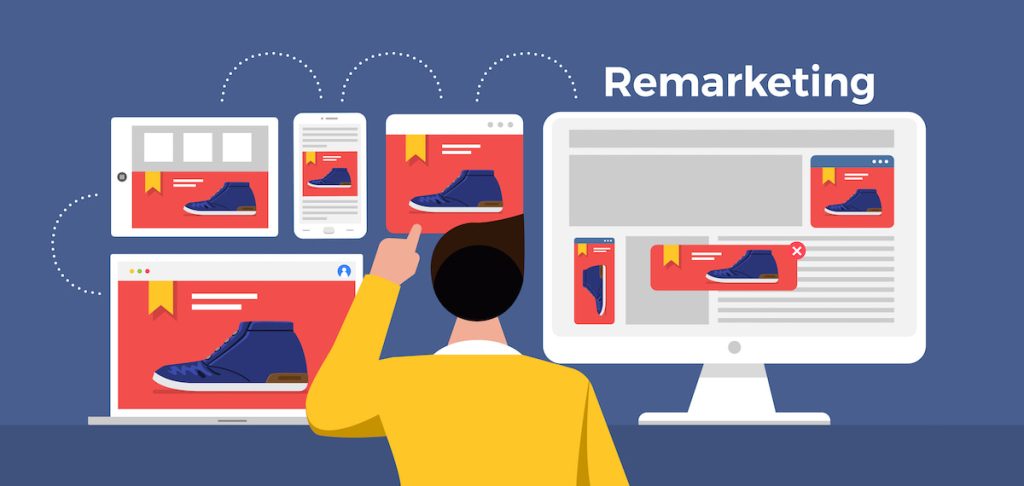
- Creative effective responsive display ads:
In a scenario where you create a remarketing Ad, you will not be able to find static or dynamic ads. That particular “responsive” in ad type refers to the fact that you’re providing Google with a bunch of assets that combine into different combinations.
For statics remarketing ads, these assets are headlines, logos, images, descriptions, and videos too. In dynamic remarketing ads, you have to do things the same but Google can also show product galleries.
- Remarketing Audiences:
The major difference between static and dynamic ads is the tracking code you need to put on your website. In the case of static remarketing, a single code serves the purpose.
On the basis of this, you can target visitors who have not been to specific pages. But if you’re looking for more dynamic features you need to add more complex remarketing code. That’s how Google will be able to match which products a specific user has visited, as Google “now” understands what visitors do on your site.
Google Search Ads
The kind of Ad that most people refer to, when they talk about Google Ads for eCommerce. These are the most common Ads, and the presence of these Ads has made people quite familiar with them. Now that you’ve learned the interface, you know your way accordingly, know your way around various products.
Settings:
Even though the settings tend to be a very simple item, there are a few ways you need to stop standing a chance of what comes next. The networks are the first up, these are places where the ads will appear. Google now has Search Partners and Display Network allowed by default:
Starting with these, opt out to ensure that you know where your ads appear. After you have set up, you can add to the mix in the Search partners.
A further common error is bid strategy collection. They’re not even aware of what’s going on with most people new to Google Advertising. So, they trust the recommendation from Google.
Keyword and match types:
The essence of Search Ads is the keywords you pick from where you want to see your ads.
It really is a big move forward. Choose too common keywords and the tourists you’ll draw are much less likely to purchase. Anything entirely. But if you pick too common keywords, then you get just a couple of clicks on your ads.
This second form of error is better than the first, but both start off very frustrating.
Via strong keyword analysis, you can prevent those frustrations and find a good balance between enough traffic and specific traffic. The process will allow you to find search queries with the appropriate volume and intention to purchase.

When you have been running the Shopping campaigns for a while, you can also use the search terms document as a keyword analysis source. It’s indeed time to add them to your campaigns when you have a list (or spreadsheet) full of important keywords.
Google really does make this easy. You can simply copy/paste the queries you find on the web. Yet if you do this, with Search Ads, you run into one of the most common errors: use the wrong types of keyword matches. They are modifiers that you apply to your search queries, and they tell Google how similar you want them to find keyword variations.
Search Ads Campaign Structure:
Being quite similar to shopping ads, campaign structure is essential to run successful search campaigns. When the right ad appears for the right story it indicates good structure.
Making campaigns easier to manage, and ensuring good quality score for keywords all indicates a good structure. This indicates that you may have to decide practical things like which campaigns you create. Which keywords to put in the same ad group, number of match types to use?
Reaching this stage it gets more challenging somehow. But for eCommerce, there is an extra dimension because you have so many different pages on your site.
Now the question is should you create an ad for each product or just for each category?
It varies from the product you are selling and how popular they are. To create ad groups for each product absolutely makes no sense, better to create an ad group with ads that target the category name.
- Search Ads:
Other than keywords creating effective search ads is another milestone to be achieved. You’ll get a number of options when you create a number of ads. There are two types, text ads and responsive search ads.
The difference between the two is that the text ads only require a few assets whereas the responsive search ads need a lot of them. In the case of text ads, you will add multiple ones in one ad group and let them choose who’s the winner but RSA’s Google will do the testing internally.
- Ad extensions:
It is one of the most important parts of your campaigns. They help you to increase the chances of clicks. They show up if you’re showing up in 1-2 position in the results. Ad extensions like site link and callout have been there since a good time and most of the accounts have at least a couple of them active.
Google continues experimenting with new types like structured snippets, and price or promotion extensions. A special type of extension is the automated one.
For google ads for eCommerce, the most important automated extensions are the seller ratings. Their work is to grab the attention and show the strength of the store!
- Bidding:
People are always keen to know the best bidding strategy. But mostly it depends on the situation. Manual CPC is also a good starting point, starting out.
You can then check with an improved CPC after a while. Then once more sales are in, you can start evaluating automated bidding techniques such as target CPA or target ROAS, all of which are particularly well suited for eCommerce google ads campaigns.
Evaluate the pre and post metrics and change the strategy accordingly.
- Dynamic Search Ads:
Keywords to find, ads to create; if you use dynamic search ads you don’t have to bother about any of these. Instead, you are able to provide the same product feed that you use with your shopping ads. Select which pages and include categories in it.
Create a few ads” templates”, and Google will automatically populate the headline with dynamic content. Dynamic ads allow you to quickly set up campaigns for a number of products.
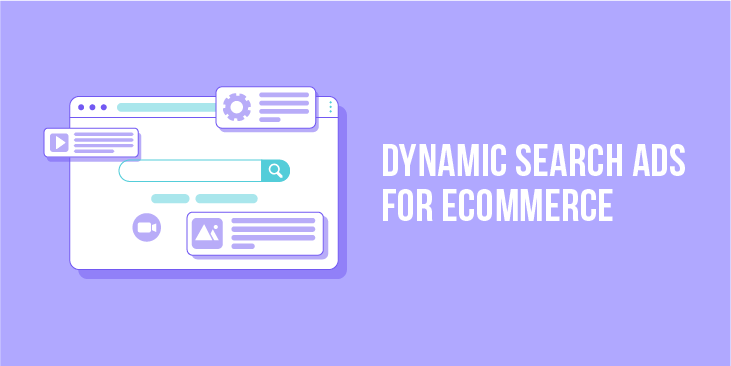
Google Display Ads
Display ads are text, image, or video ads that show up on Google display network, a known group owned by Google and third-party websites. It includes YouTube, Gmail, and 2 million websites that show AdSense ads.
Google Display campaigns are often managed through the Google Ads interface, although this is a separate platform altogether.
We need a change in mindset to run successful Display Ads.
With Shopping and Search Ads, we present advertisements to people who actively search for items.
Yet with Display Advertising, you are showing up to people not even looking for your stuff. And for them to be successful, you need to interrupt them. The reason why more than 2 percent of Internet users use ad blockers is display ads. It is a phenomenon which keeps on that. I still use one, too. It’s also an environment infested with fraud by clicks.
Creative:
Display Ads are quite similar to the standard Remarketing Ads. The most popular examples are the Responsive Display ads where you add icons, pictures, headlines, and texts of definition, which Google blends in its best ways.
Many people aren’t major fans of the feel of the “normal” ads. A common concern is that their brand is not looking like it. Particularly because many of the advertisements you see, especially of big-budget companies, look very good.
You can skip the default look and have your own banners made. However, this can be an expensive affair also because of all the various sizes you need.
Targeting Options:
Targeting the right people plays a very significant role. Anytime you learn about the current breach of privacy by corporations like Facebook and Google, that’s what’s at the heart of it.
Google builds a profile for someone who interacts with one of its websites or services to find out who they are and what they want. We then process all that data and make it available for advertisers like yourself to select from and choose.
Some of the targeting options are as follows:
- Demographics
- Keywords
- Topics
- Placements
- Audiences
Display Campaign structure:
Understanding the structure of display campaign structure with an example:
Campaign#1: Display – retargeting
Ad group #1: Product viewers (targeting: remarketing audience)
Ad group #2: Checkout abandoners (targeting: remarketing audience)
Campaign #2: Display – in-market audience
Ad group #1: Outdoor Recreational Equipment (targeting: in-market audience)
Ad group #2: Fitness Products & Services (targeting: in-market audience)
Ad group #3: Sporting Goods (targeting: in-market audience)
Gmail Ads:
The ads on gmail inboxes looks like an email but when opened shows an ad instead. This one gets a lot of attention. This one comes straight in front of people on the screen as soon as people open their email accounts.
The click rate is quite high in this scenario. Subject lines play a very important role in grabbing the attention, to show an attractive, time-sensitive offer, and convert on your own site.

Youtube Ads for eCommerce:
These are one of their kind. One of the major reasons you can’t ignore them simply! It is important to understand that your success as a youtube advertiser depends upon bridging the gap between the users who are on youtube and the goods you’re selling.
As with most of their commercials, this video ad is a combination of entertainment and education. It should be very familiar with the realistic specifics of how to configure video campaigns as they have several parallels with other Display campaigns.
Youtube Ad formats:
Once you’ve created your ads and uploaded them on youtube, it’s time to start creating a campaign. Below mentioned are some of the different video ad formats to choose from:
- Skippable in-stream ads: these ads appear before, during or after another video and can be skipped after 5 seconds
- Non-skippable in-stream ads: these ads cannot be skipped and play for 15 seconds
- Video discovery ads: these are ads the appear as a promoted video next to a playing video or in the search results
- Bumper ads: ads that are 6 seconds or less that can’t be skipped
- Outstream ads: these are video ads that run outside video ads
- Masthead ads: ads that take over the YouTube homepage
- Shopping: video ads linked with a Shopping feed
Targeting options:
It is noticeable that many targeting options are similar as on the display network. Below are the ones you get access to on Youtube:
- More detailed demographics: education, marital status, homeownership
- Competitor channels (a type of placement)
- Life events: people that are in the middle of life milestones like moving, graduating from college, or getting married
- Retarget people that have interacted with your channel
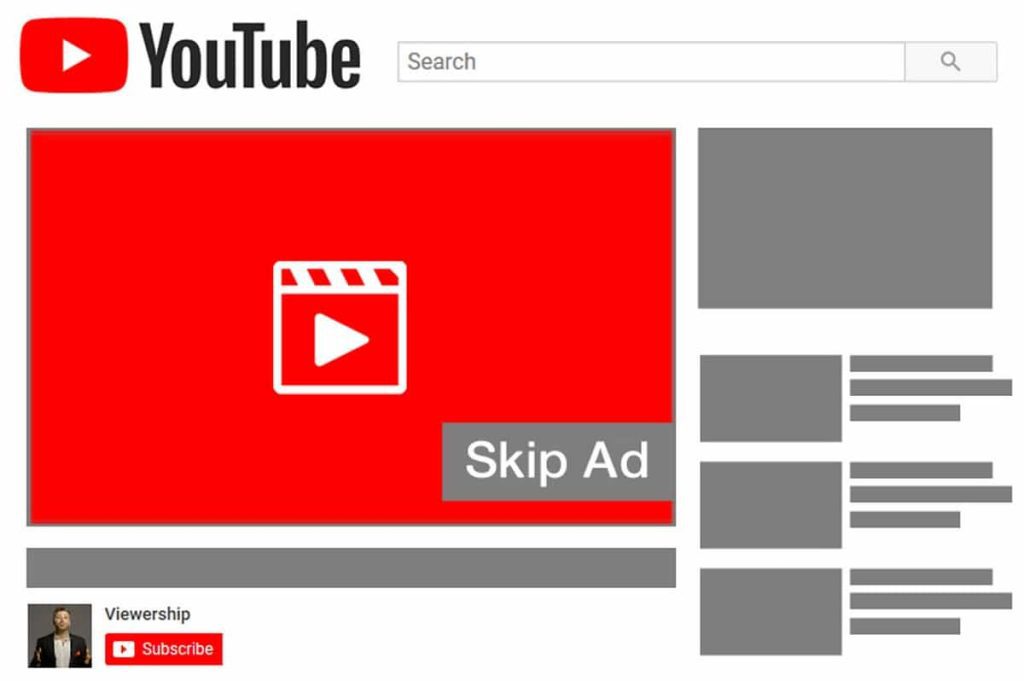
Bidding:
In youtube ads the most important thing in this scenario is view. The payment differs from the bidding strategy available. Which ad format is being used also makes a difference.
For some ads you are charged irrespective of anything, whereas for other videos you’ll only pay when someone doesn’t skip and watches more than 30 seconds. Youtube bidding strategies can be divided into three groups:
- Conversion-based bidding: Maximize conversion, Target CPA
- CPM (Cost per mile) bidding: Target CPM, Maximum CPM, and Viewable CPM
- CPV (Cost per view) bidding: Maximum CPV
Trueview ads for shopping:
Discussing YouTube Ads for ecommerce stores, this ad-format is a combo of an “in-stream ad” , together with shopping ads.
ROI Minds – Maximize Your Online eCommerce Store’s Profits with Google Ads (PPC)!
Are you looking to make your online store more profitable using Google Ads? Join us as we embark on an exciting journey to uncover the strategies, insights, and our own remarkable achievement—a stunning 13.61 times return on investment (ROI) in just 30 days.
Don’t miss out on this unique opportunity to learn from ROI Minds. We’ll show you how to make the most of Google Ads for your online eCommerce store in a way that’s easy to understand and put into practice. Stay tuned for our upcoming blog!
What to focus on right now:
This guide hopefully has given you ideas and actions to be implemented for better results. These guidelines will bring more clarity, experiments, success and upgrade your skills.





